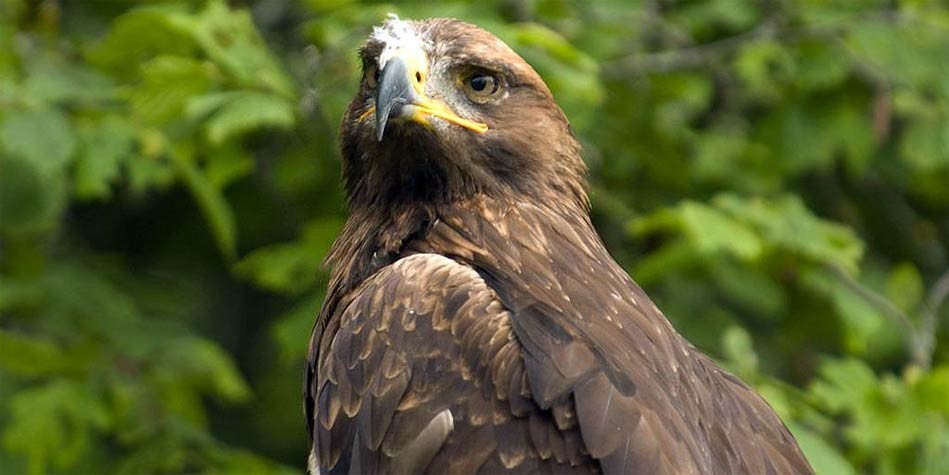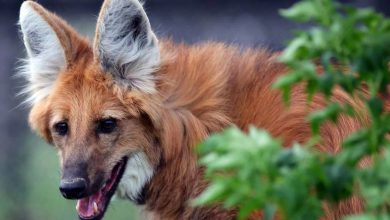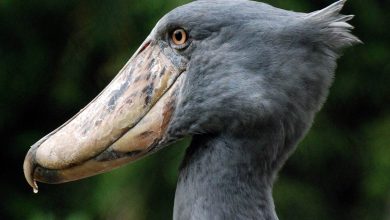Lesser spotted eagle (Clanga pomarina)
This medium-sized bird of prey is not as large as a golden eagle or a harpy eagle, but its hunting skills and its character without doubt make it privileged to be a true eagle – a strong, fearless bird, which values its freedom. Actually, ‘true eagles’ is a common name for birds of the Aquila and Hieraaetus genus, which would indicate that the article’s main character (as it does not belong to either of these genera) is probably, technically speaking, not an eagle 😉 Its total population is rather sizeable, as it ranges from 40,000 – 60,000 adult birds.
Classification
- Class: Aves
- Order: Accipitriformes
- Family: Accipitridae
- Subfamily: Buteoninae (disputed)
- Genus: Clanga
- Species: Clanga pomarina / Aquila pomarina / Ictinaetus pomarinus
The Clanga genus roots from the Aquila genus. There are three Clanga species:
- Greater spotted eagle (Clanga clanga)
- Indian spotted eagle (Clanga hastata)
- Lesser spotted eagle (Clanga pomarina)
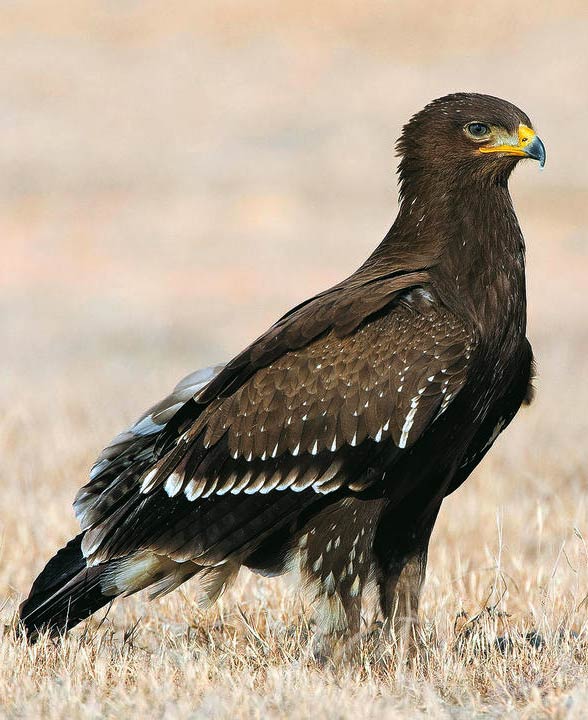
Areas of occurrence
It mainly inhabits Central and East Europe, as well as the south-east Turkey, Caucasus mountains, Southern Russia and Iran. Single eagles may be observed in France and Spain, south of Kazakhstan and in Finland. It also reaches the habitats in the southern parts of the Arabian Peninsula, whereas winters are spent in the East and South Africa.
Habitat
It nests in the open or sparsely forested areas, ample with food such as rats and mice. As a result, it often lives in close proximity to crop fields and meadows, locating its nest on the edges of forests. Most hatches are carried out in the lowland areas, yet hatching pairs were also observed in the dry, mountain forests at an altitude of 2200 meters (7200 ft ) above sea level. During its residence in the African continent, it mostly inhabits the humid, sparsely forested savannas.

Characteristics
Appearance
The lesser spotted eagle’s body length ranges from 55 – 65 cm (22 – 26 in), which makes it smaller than a steppe eagle (Aquila nipalensis) and the greater spotted eagle (Clanga clanga). The lesser spotted eagle is also not excessively heavy – it weighs around 1,2 – 2.2 kg (2.6 – 4.9 lb), with an average weight of 1.6 kg (3.5 lb), whereas the steppe eagle reaches 2 – 4.9 kg (4.4 – 11 lb) and the greater spotted eagle (Clanga clanga): 1.6–2.5 kg (3.5–5.5 lb). It can be distinguished from its two relatives by its distinctive yellow irises – its cousins’ eyes are brown.
Its head, neck and wings are covered with bright brown feathers, the rest of the body remains darker in terms of color. The head and beak are not very large. However, as the Aquila genus eagles, it has a bright, V-shaped pattern at the base of its tail. Adolescent birds have their wings and backs covered with white speckles.
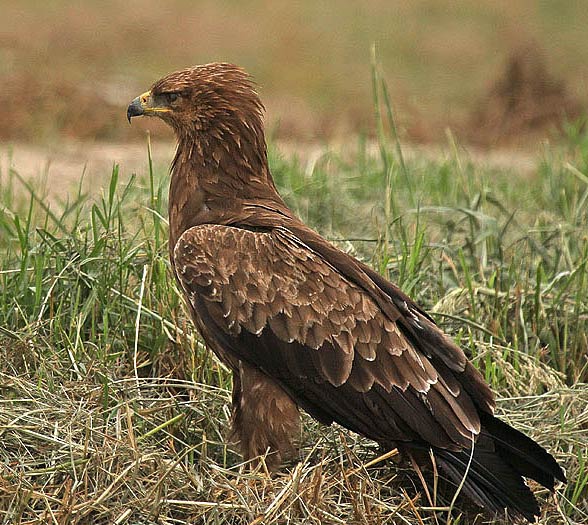
Diet and hunting
It usually hunts individually, but may also hunt with a partner or in small groups.
Like all Accipitridae, it is a carnivorous bird. It mostly eats small mammals, mainly rodents, but also birds, amphibians, reptiles, sometimes insects. It often hunts for voles – Arvicolinae subfamily rodents. During winters, in Africa, it most eagerly feasts on termites.
While hunting, it normally sits on a low tree branch or walks around the forest bedding. Unlike many other raptors, it rarely seeks prey mid-flight. Nevertheless, it can perform long migrations, which are often intermitted by the thirst or urge to hunt.
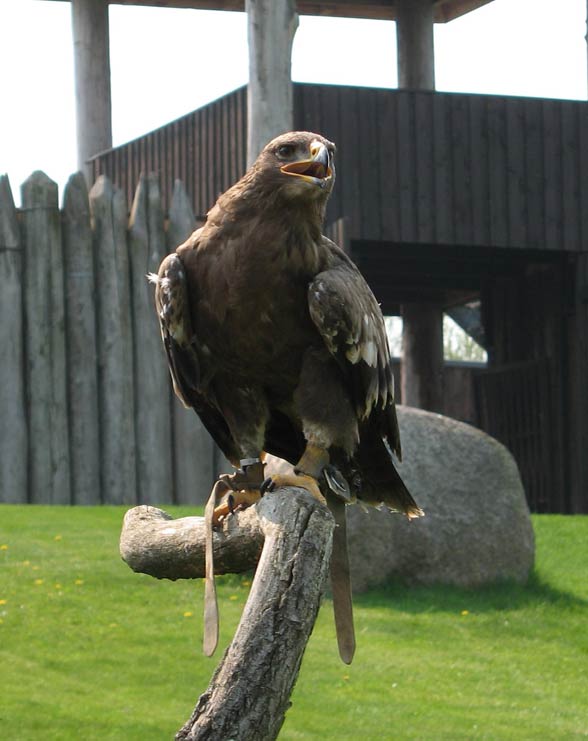
Natural enemies
In its ecosystems, the lesser spotted eagle does not have any natural enemies. Humans are its main threat, especially our crop protection methods, as farmers use multiple chemical agents such as phosphates to prevent rodent and insect invasions. Therefore birds of prey, including the lesser spotted eagle, often die as a result of consumption of infected rodents.
Apart from this chemical war, humans also contribute to diminishing this species’ population by hunting, mainly in the period of migration to African winter habitats. Loss of habitats due to agricultural expansion and so-called cainism (fratricide) of these birds’ nestlings are also substantial problems.
Conceivably the lesser spotted eagle’s eggs may be a tasty meal for other animals, especially snakes. However there is no hard evidence for such a state of affairs, the greater spotted eagle’s eggs are often consumed by the American minks (Neovison vison), which indicates that it is possible for eggs of the lesser spotted eagle also to be an element of this mustelid species’ diet.
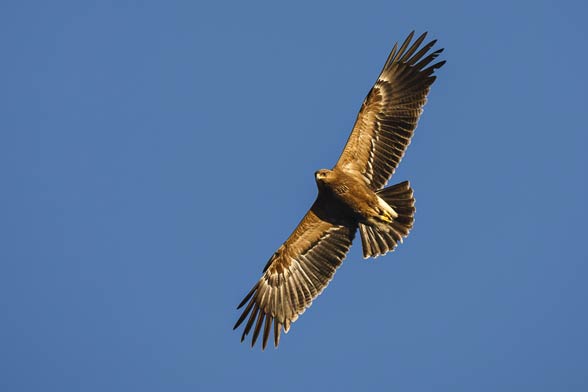
Lifestyle, character
The lesser spotted eagle spends most of its time on the trees. All activities are carried out during the day, as it sleeps at night. It leads a solitary life, but in the hatching season, it can be observed living in pairs. As a migrating species, the lesser spotted eagle spends the breeding season in Europe, just to move to Africa to spend the coldest months of the year there.
It has a strong territorial instinct, which makes it fight birds that happen to approach its nest too closely. This kind of aggression is apparent for both genders, yet males seem to be more combative. Supposedly, males act territorial only towards other males.
In the hatching season lesser spotted eagle females often visit other females’ nests, yet the reason for such actions are uncertain. Generally speaking, the lesser spotted eagle is the only bird of prey which leaves its own nest and moves to a foreign one.
Communication, senses
During its stay in the hatching regions, it flies alone or in pairs. The winter habitats are cohabited with other Accipitridae, especially the greater spotted eagle. The most important and most significant senses of a lesser spotted eagle are: vision, hearing and touch.
It communicates within its species (mainly partners and offspring) through various sounds.
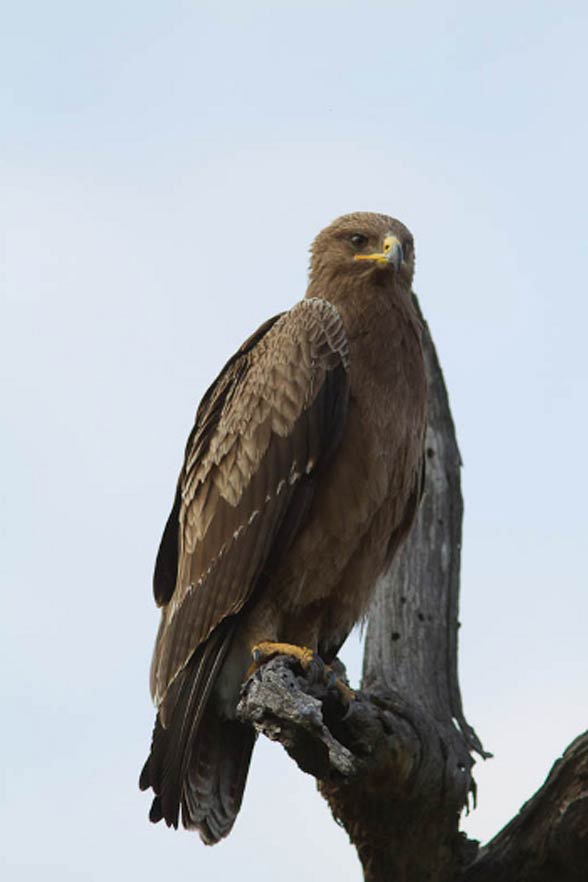
Breeding
Like many Accipitridae birds, the lesser spotted eagle is a monogamous species, however, there is no hard evidence for partnership faithfulness, yet it has been proven that the same hatching pair returns to the same nest yearly. Supposedly, females are responsible for the protection of the nest and its surroundings.
A female always bears out one hatch per year. A pair builds the nest on a tall tree, laying eggs towards the end of April or beginning of May. Females lay 1-2 eggs and incubates them for the next 36 – 41 days. Throughout the whole incubation process, the mother stays in the nest, leaving the duty of acquiring food to the father. Withal, only one nestling survives, as the older and stronger chick often kills its younger and feebler sibling.
Young eagles grow their feathers in the middle of July, yet is uncertain when do they become fully independent – rough estimates range from 32 – 80 days. Sexual maturity is reached relatively late, around 3 – 4 years of age.
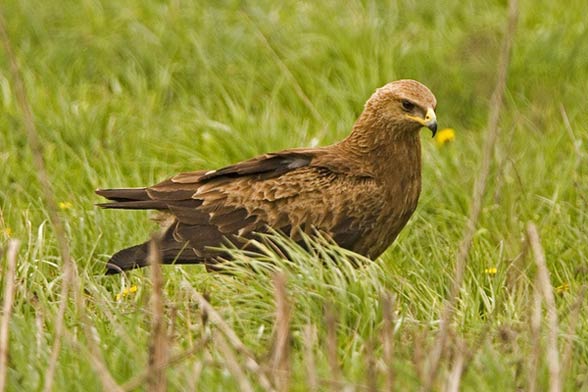
Population
The European population is estimated at 32,800 – 44,200 mature individuals. The European population represents 73% of the whole population, so the estimate for the whole population is 44,900 – 60,500. The population trend is not known, but rather the population is not decreasing rapidly.
Detailed characteristics / size
Lesser spotted eagle (Clanga pomarina)
- Body length: 55 – 65 cm (22 – 26 in)
- Wingspan: 143 -168 cm (56 – 66 in)
- Weight: 1,2 – 2.2 kg (2.6 – 4.9 lb); 1.6 kg (3.5 lb) on average
- Lifespan: up to 20 – 25 years, mostly 8 – 10 years
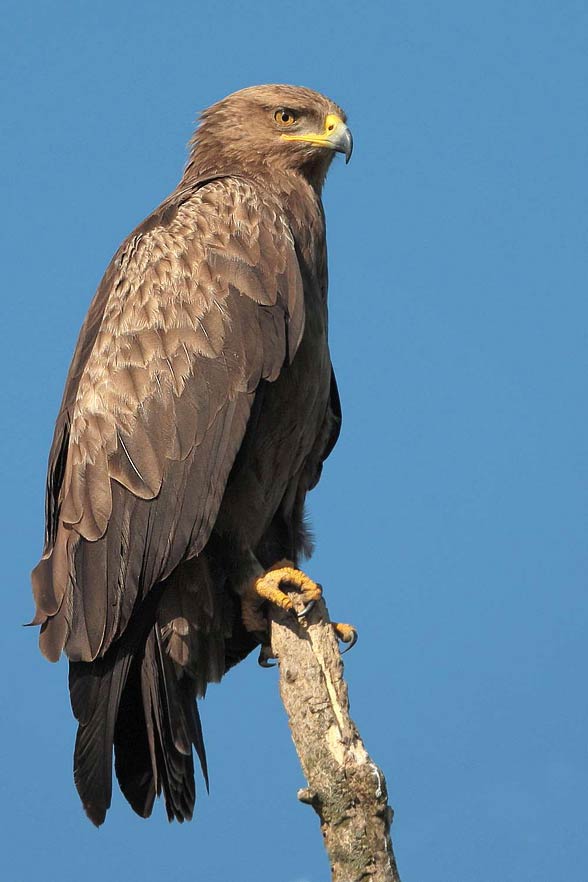
Lesser spotted eagle – interesting facts
- Its closest relatives include the greater spotted eagle and the Indian spotted eagle (Clanga hastata), which was formerly considered merely a Clanga pomarina
- The lesser spotted eagle often cross-breeds with the greater spotted eagle. Hybrids of those two species are hardly distinguishable from the pure-bred species.
- The lesser spotted eagle is one of 4 eagle species nesting in Poland.
- In Poland, it is a rare species. The Polish Eagle Protection Committee estimates that about 2000 breeding pairs live in this country. It is most common in the northern and southern parts of Poland and in the Stobrawski Landscape Park (about 10 breeding pairs), located in the northern region of the Opole Voivodership.
- Considered to be a rare resident in Poland, nevertheless, its total population is rather sizeable, as it ranges from 40 000 – 60 000 adult birds.
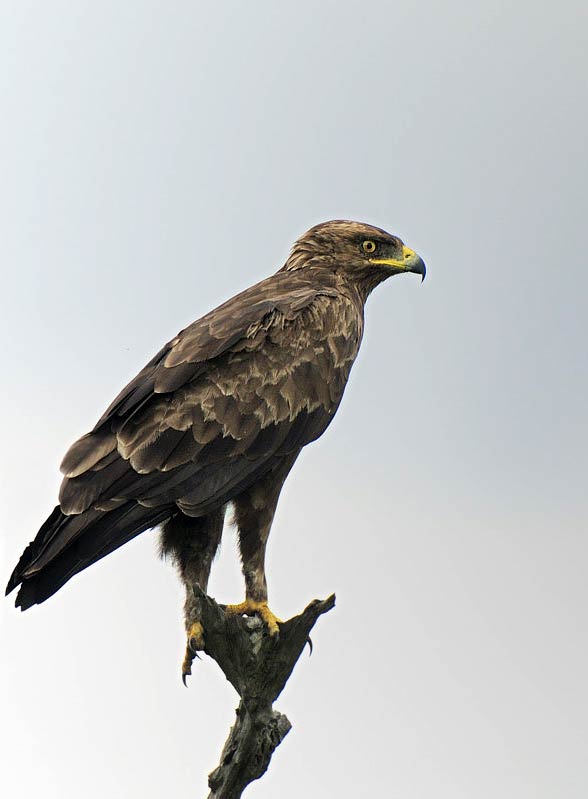
Recommended
- Eagles
- Animals records
- Largest eagles Top10
- Largest birds of prey Top10
- Haast’s eagle
- Bald eagle
- Black eagle
- Golden eagle
- Steller’s sea eagle
- Philippine eagle
- Crowned eagle
- Martial eagle
- Wedge-tailed eagle
- Eastern imperial eagle
- Steppe eagles
- Bearded vulture
- Fastest animals – Top 10
- Fastest birds – Top 10
- Most venomous snakes – Top 10
- Largest sharks Top 10
- Heaviest land animals
- Largest crocodiles Top 10
- Largest whales TOP 10
- Longest snakes Top 10
- Highest (Top) flying bird – Top 10
- Largest and heaviest birds
- Largest turtles TOP 10

